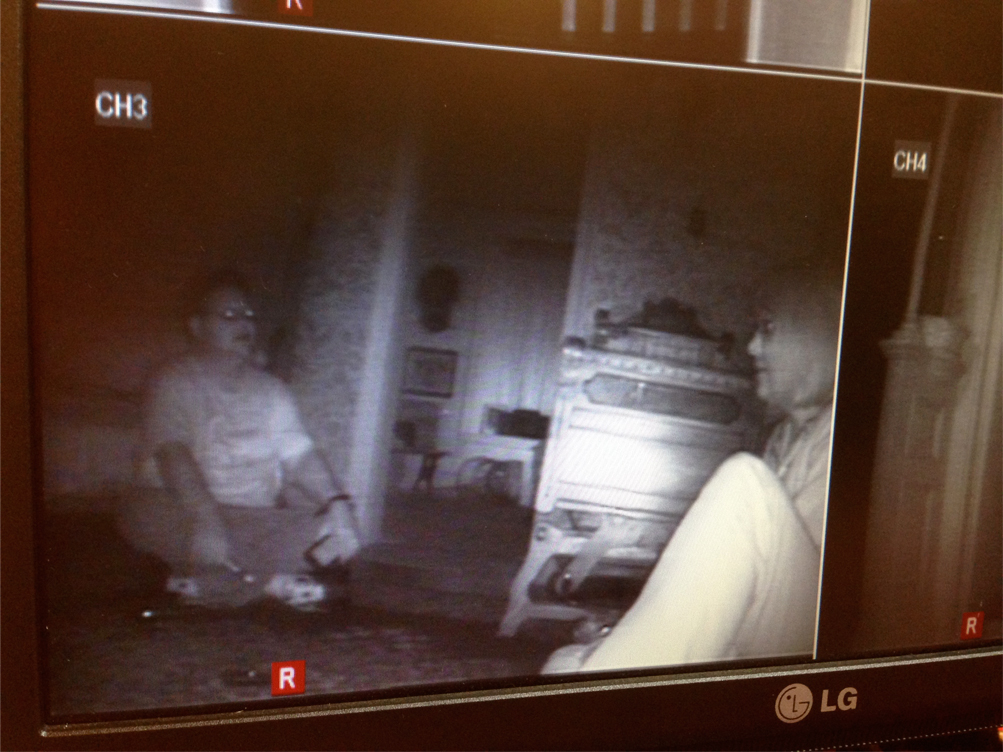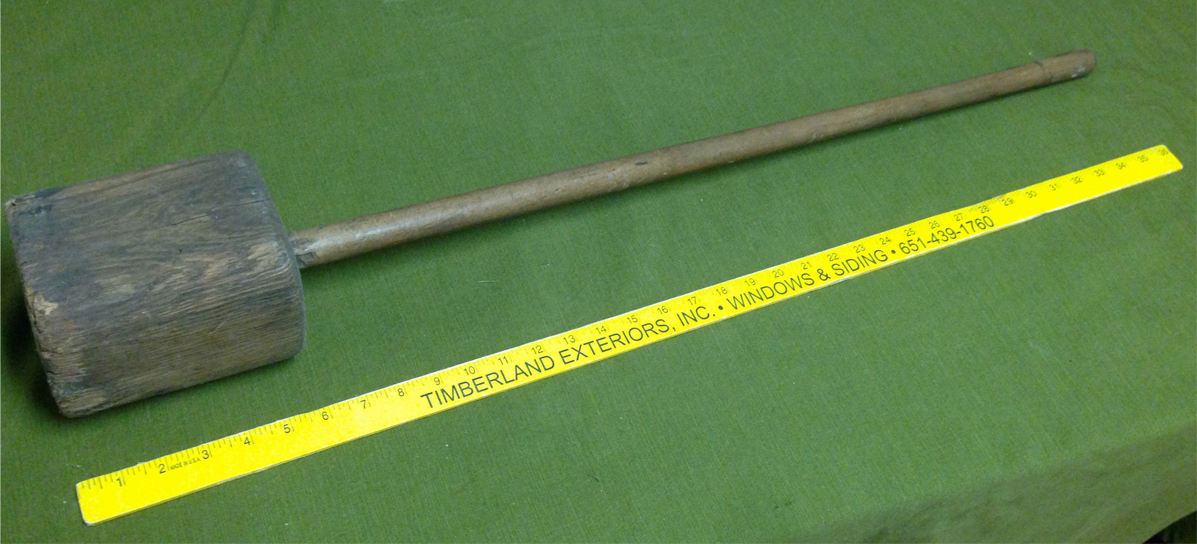Receive the Historical Messenger in your inbox once every two weeks by signing up for our mailing list!
|
This issue: Contents
Tuesday, September 22nd, 2015
Editor’s NoteHello hello! You may think that WCHS is winding down a bit now that the weather has drifted into more of an autumn flavor, but even this very week is simply packed to the gills! Starting Thursday, our annual Fall Membership Meeting is almost here! Head down to our first News Story to get your last minute reservation! Moving through the week, on Saturday, September 26th is the Apple-Away 5K hosted by the Gammelgården Museum and WCHS! Click here to learn more! Finally, this Sunday, September 27th, you can learn how to make the most of your camera during the Hay Lake Photography Exhibition! Marilyn Rau and Troy Schmidt, members of the Western Wisconsin Photography Club, will be holding a free and open to the public exhibition of their photographs. The pictures feature historic and scenic locales such as the Warden’s House Museum and, of course, the Hay Lake Schoolhouse itself. Bring your own camera, take advantage of our beautiful museum grounds, and learn a few of the club’s best tips and tricks! Whew! And after this busy week, you can take a look at our second bit of News to read about a few spooky events coming up in October! Of course, I’ve also wandered into the back corners of our artifact collection to select a random item for today’s “What Is This Thing?!” challenge. Make sure you hide any dictionaries you may own before scrolling down to our Old News section. Finally, we’ll wrap up today’s issue by taking a look at one of the most exciting and interesting early immigrants of Washington County. Want to learn more about the history of Washington County? “Like” WCHS on Facebook and follow us on Twitter! Sean Pallas Historical Messenger editor and Warden’s House Site Manager WCHS NewsFall Membership Dinner Meeting
Gardner, an award-winning historian who has documented properties for the National Register of Historic Places and the Historic American Engineering Record, authored the book, “Wood, Concrete, Stone & Steel: Minnesota’s Historic Bridges” in 2008. Through arresting photographs and lively narrative, Gardner makes a compelling argument for the value of preserving our bridges and the cultural heritage they carry and brings to life their importance in Minnesota’s past, present and future. In Washington County, Gardner will touch on the significance of many of the crossings that dot the landscape and tell the vital history of Minnesota’s most historic county. From the Stone Bridge in Stillwater Township to the old Spiral Bridge in Denmark Township to Stillwater’s historic Lift Bridge to the “Dillinger Bridge” in St. Paul Park, he will tell our story through the history of Washington County Bridges. Richard Moe, the President of the National Trust for Historic Preservation, said of Gardner’s book that it “reminds us that bridges have played a significant role in Minnesota’s history.” Moe continued by saying that Gardner “tells the compelling story of the visionary people, historic events, and technological advances that helped make Minnesota the special place we know and cherish.” The event is open to the public. Cost for the dinner and program is $20 for WCHS Members and $25 for Non-Members. The Lowell Inn Banquet Center is located at 102 North Second Street and there is parking available in the city parking ramp next to the facility. The evening will begin at 5:30 with a social hour, dinner at 6:30 and the business meeting will be at 7:30 PM. Mr. Gardner’s presentation will be after the short business meeting. Reservations are required. To make reservations or for more information about the event please call 651-439-5956 or visit www.wchsmn.org. More: Events WCHS NewsOur “Haunted” October EventsAs October and Halloween approaches, we all seem to have goblins, ghouls, and (of course) ghosts on the mind! Well here at WCHS we’re certainly are keeping in spirit with this spooky autumn mood with two exciting events. First, on Sunday, October 11th, we’ll be giving you a chance to chat with the ‘ghosts’ of Scandia’s history during a Living Cemetery Tour of the Elim Cemetery from 11:00 AM – 2:00 PM. Guests will be guided through the cemetery, stopping to meet actors portraying various figures of the area’s history – all whom are buried at this very cemetery. You’ll meet a former reverend of the church, a victim of the 1931 meningitis outbreak, a Civil War soldier, and more on this interesting and unique way to explore local history. This free and open to the public event is made possible through a joint partnership between the Gammelgården Museum, the Elim Lutheran Church of Scandia, and the Washington County Historical Society.
The event will be held at the Warden’s House Museum in Stillwater. They will host encore presentations at 11:00AM, 3:00PM, and 7:00PM. Since last year’s event, the group has investigated reportedly haunted local locales such as the Wilson Place Mansion in Menomonie, WI, the LeDuc Mansion in Hastings, the William A. Irvin in Duluth and, of course, another investigation of the Warden’s House itself. Paul and Linda, the winners of our Paranormal Investigation Raffle, recently assisted the Johnsdale Paranormal Group in their fourth investigation of the Warden’s House and are photographed to the right. The pair will also make special guest appearances during the program on the 24th. During this free and open to the public presentation, founder Justin Miner and his co-investigators will delve into the evidence they have gathered over the last year and will also explain exactly what goes into a “ghost hunt”. Including a showcase of their state-of-the-art equipment. Each time slot will feature the same program and will last about 80 minutes. Please contact Sean Pallas at spallas.wchs@gmail.com or at 651-439-5956 for more information regarding these events. What is This Thing?!
What Is This Thing?! (Round 17)Well we had a lot of guesses at the identity of last week’s What Is This Thing?! and most of you were pretty dang close! Just about everyone recognized they were goggles, but the specific type seemed to be up for debate. The answers ranged from sawmill goggles to horse eye-protection to an early wrestling mask – the closest guess was avaitor glasses. But these are actually early automobile goggles! They belonged to Dr. Fredrick Stevens of Lake Elmo in the 1880s. They would have been a necessary accessory to the early automobile enthusiast as cars lacked windshields until the early 1900s! Thank you to everyone who participated in last week’s challenge! Can you identify the WCHS artifact photographed above? Can you guess its use? If you’d care to venture an answer, you can send an email to me at spallas.wchs@gmail.com, tweet @WCHSMN, or post your guess on our Facebook page. Good luck! Old NewsLeaving Webster Spinning in His GraveIf you think that texting and instant messaging has butchered the English language, then let the following article assure you that dodging cleaver swings is nothing new for our wonderfully perculiar manner of communicating. Is the following article meant to be sarcastic? It’s a bit hard to tell. If the editor was sincere, you’ll notice that even in two short paragraphs they were unable to keep their “simpl system” consistent. For example, “have” is spelled both with and without the final “e”. Despite the arguments presented, I think I’ll stick with dictionary English despite all it’s little quirks and silent letters. Y Not Mak It Simpl? – Stillwater Messenger – September 22, 1906 A simpl styl of spellin has ben okd by som big men, and it has its gud points. But the list givn out is not big enuf. If we ar to hav a simpl system y not get down to bed rok rite of? Y not include al the words that can be speld in an e-zy way? Y b a thousn yrs doing something that can be don in one? Just think of the trubl to spel rite when it mite be so much ezier to tak a short cut. Then u cud spel just as wel as the nex man and wud have no caus to blush because u sometims mist the way other folks spel. If we ar to hav reform let us reform in ernest. To b sure the simpl way wud lok funy at first but after a wile it wud be al rite, and think of the savin in tim, ink and papr! Ther is nothing lik getin ust to an inovasun. Then it comes as a mater of corse. We hav the simpl life y not the simpl spellin? We paus for anser. Featured ArticleThe Adventures of Captain John Oliverby Brent Peterson, WCHS Executive Director In the early days of our country, sailing at sea was difficult and dangerous, and it took a certain type of man to do this. One of these early sea explorers found his way to Washington County, and told many exciting stories of his days on the sea. John Oliver was born in 1796 in the county of Kent, England. His father died while he was very young, and due to difficult times, Oliver probably never received and proper education. He helped out at the family farm until the age of nine, when his desire to go work on the sea made him leave home. Oliver’s first voyage was to Canton, China, and it was on this voyage that he learned, first hand, how cruel the treatment of seamen was by the officers. He was often kicked by the officers, and was also ordered to the masthead of the ship during the voyage while the seas were turbulent, just to test his nerve and courage. On another voyage, this time to Calcutta, the crew deserted the ship due to severe officer cruelty. The crew planned to make their way to Bombay where they might sign on with another ship for a trip back to England. Oliver was with the crew as they made there way inland to avoid the natives along the coast. The group of men were in constant danger from the animals, both day and night. One night, the men made a fire circle and slept inside of it. However, in the morning, the man sleeping next to Oliver had disappeared. It is thought that he was taken by a lion or tiger during the night. The men finally reached Bombay and signed on with a ship bound for Canton, China. While in Canton, John Oliver went to work on an American ship, and ever after that, Oliver claimed to be an American. This American ship made many trips to the Marquesas Islands in the Pacific to bring back sandalwood to Canton. The Chinese used the sandalwood in their incense burners and there was a good market for the wood. After one such voyage the ship’s officers decided to leave two men on the island to collect sandalwood prior to their next return visit. Oliver was one of the two. The two sailors stayed with a native tribe who was eager to trade with the white men. However, the sailing ship never returned, and later it was assumed that the ship was captured by the British because this was the time of the War of 1812. Oliver remained on the island for some time, and during that time he was welcomed into the native tribe. He was honored by participating in a tattooing ceremony in which nearly all of his body was tattooed with many designs and characters. In 1813, the Commodore Porter of the U.S. Frigate, Essex, landed on the island. Oliver and his companion were able to get passage on the ship. However, the ship was hoping to capture an English ship. The Essex was soon surrounded and the crew taken to Halifax prison, in Nova Scotia. He was transferred to Dartmoor prison in England, just a few miles from his home and family. Oliver was released after 13 months as a prisoner. He sailed to New York, the first time he had seen his adoptive country. In 1820 he married Miss Sarah Spear, and the couple had several children. Oliver continued to work as a seaman in and around the Boston Harbor and eventually acquiring the title of Captain. As his eyes began to fail in his later years, he had to give up his pilot duties, but his son, also named John, followed his father as a harbor pilot until 1848, when he came west and stopped in the Lakeland area of Washington County. Young John pre-empted 160 acres of land, and left his brother Edwin to watch over it, then returned to Boston to bring his father and family to Minnesota. The family became well-known in the area and the Young John Oliver went on to operated the ferry boat from Lakeland to the Wisconsin shore. It is everyone’s dream to live a exciting and adventurous life, and in the case of John Oliver, it certainly came true. |
Events
More information: WCHS Events >>> Preserve the Past, Share in the Future!Become a member of the Washington County Historical Society! Membership is one way that you can help support the Washington County Historical Society. Your membership helps us collect, preserve, and disseminate the history of Washington County for county residents and visitors in the belief that a historical perspective enhances our understanding of community and sense of place. Benefits of membership:
The Washington County Historical Society has depended on membership ever since it was formed in 1934. Please show your support for the organization by becoming a member today. More: WCHS Membership >>> Mission StatementWashington County Historical Society collects, preserves, and disseminates the history of the county and state of Minnesota.
|
|||||||||
 The Washington County Historical Society is excited to have Author Denis Gardner as the featured speaker at the Fall History Dinner meeting to be held on Thursday, September 24th at the Lowell Inn Banquet Hall in Stillwater.
The Washington County Historical Society is excited to have Author Denis Gardner as the featured speaker at the Fall History Dinner meeting to be held on Thursday, September 24th at the Lowell Inn Banquet Hall in Stillwater. And at the end of the month on Saturday, October 24th, the
And at the end of the month on Saturday, October 24th, the 
